Posted by: Ken @ 6:25 pm
Since moving to South Florida in 2004, we have taken a rather perverse pride in never needing to turn on our central heating system. Some cool winter nights we might bundle up and throw one of our down comforters on the bed, but it never got so cold long enough to justify turning up the thermostat. We actually did not know whether our heating system even worked!
For nearly two weeks in early January, all of the southern US experienced a prolonged spell of historically low temperatures, For three nights in a row our overnight temperatures dipped very close to freezing. Exotic tropical lizards such as Iguanas fell into stupor and rained down from the trees. We were treated to news stories such as this: Florida cold spell knocks iguanas from trees, and a viral You Tube Video: Frozen Iguanas Fall From Trees.
The cold also took a heavy toll on tropical fish. Commercial fish hatcheries that catered to the pet trade suffered huge losses. Introduced species, particularly tilapia and other cichlids floated to the top of canals and lakes. The ditch along the trail in our local birding patch was littered with the corpses of such species. I realized that this was likely the reason why there were so many herons, storks and ibises along the ditch last week, when I walked the “patch,” and saw an abundance of waders. I also encountered a Cottonmouth Moccasin and two Bobcats. This week I went out again, especially looking for Bobcat tracks.
This Pond Cypress was decorated with nicely spaced white waders: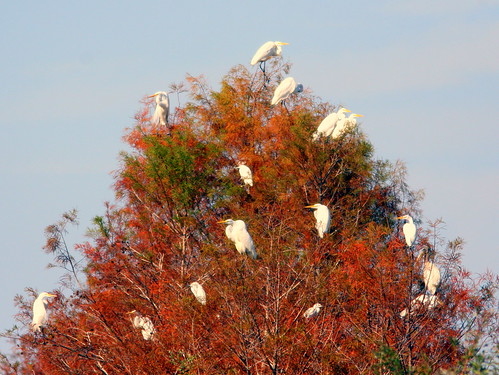
Wood Storks had exclusive use of my favorite old snag:
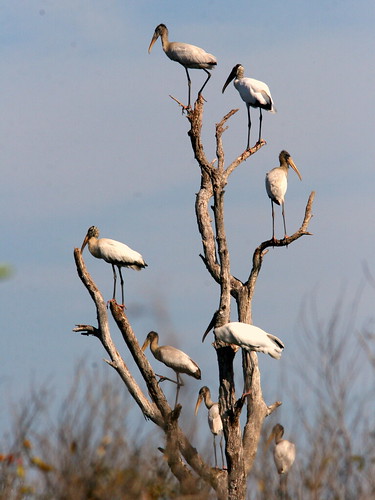
Walking along the ditch, I flushed out several more storks: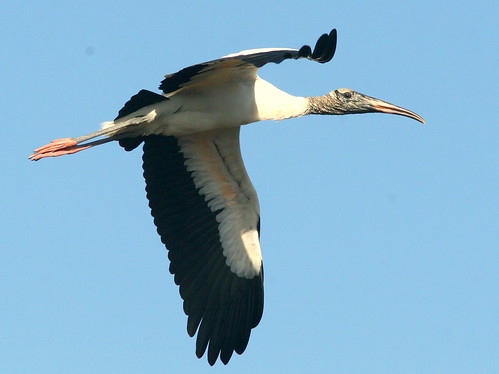
A small flock of White Ibises flew overhead: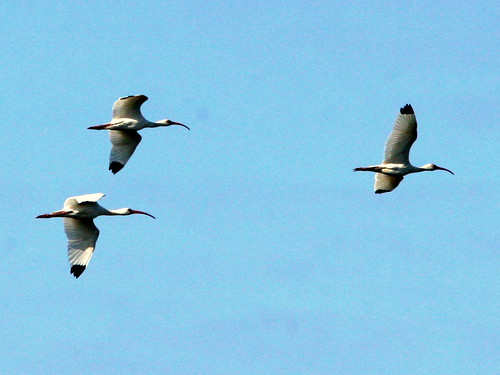
Small birds were scarce. I got a fleeting glimpse of a Swamp Sparrow in its usual thicket, but this Gray Catbird posed for me, showing off its rusty undertail coverts:
A Common Yellowthroat perched on cattails next to the ditch:
An abundance of butterflies made up for the lack of birds. This White Peacock was a small specimen, with only about a 1 1/4 inch wingspan:
This Zebra Heliconian was likewise very small. I wonder why:
An appropriately diminutive Firey Skipper probes a flower with a tongue that is as long as its body: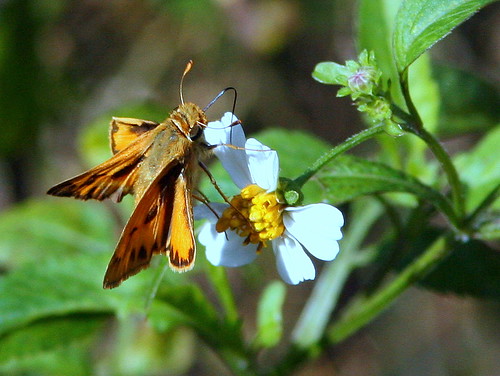
It had rained quite hard, but briefly, the day before. I knew that it would be a perfect morning for tracking, as the rain would have obliterated the old footprints and bicycle tracks. Sure enough, there were several places in the trails where puddles had formed and partially dried up. This provided a nice clean background. The tracks were mostly from raccoons and deer, but I did find the Bobcat tracks.
Having read up on signs of Bobcats, I learned that, unlike tabby cats, Bobcats do not bury their feces, except those near a den with cubs. Instead, they deposit them conspicuously on rocks or on piles of stones they assemble. This serves to advertise their territory. I found several old piles of scat. Earlier, believing that they might be from Coyotes, I had photographed some of these when still fresh. I’ll spare you a photo, but if you are curious, look here.
There have been no reports of local Coyote sightings, and the placement of piles of feces, mostly on flat rocks in the middle of the trail in Bobcat territory makes me believe they came from the latter species.
Here is an older scat pile that I photographed this week: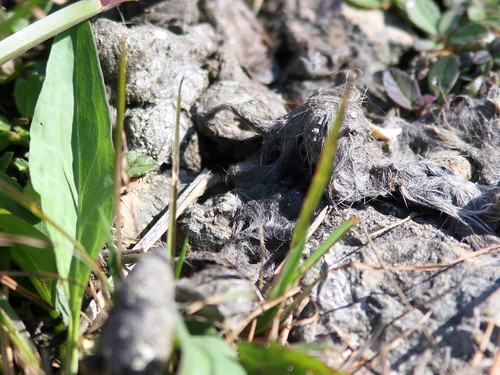
Ironically, while I was engaged in scatological studies on the ground, I frightened an Anhinga that had been fishing in the ditch next to the trail. It uttered an irritated squawk, flew low and away, but doubled back, heading right towards me. Expecting a perfect flight shot, I raised my camera and got the bird in the camera’s viewfinder. Just as I was depressing the shutter, the Anhinga let loose with a barrage that was headed right at me! I jumped to my right, and the excrement barely missed my left shoulder. I cannot help but think it was an act of retaliation.
Turning to another unpleasant subject, I again saw several Cottonmouth Moccasins. One, swimming in the ditch, particularly intrigued me. As I watched, the snake encountered a dead fish. It appeared to “smell” it by resting its chin on it and thrusting out its tongue.
Then, to my amazement, the moccasin took the fish into its jaws, shook it as if to break off a piece, then disappeared briefly under the water with it (click on photo for sequential series of pictures): 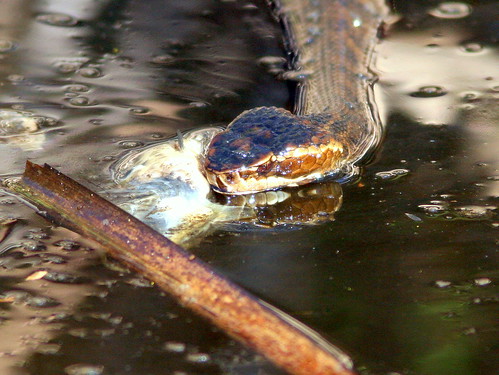
When it surfaced, the snake’s mouth was empty. In fact, it opened up its mouth for a moment. There did not seem to have been enough time for it to swallow a portion:
Then, the snake moved away, now apparently ignoring the dead fish: 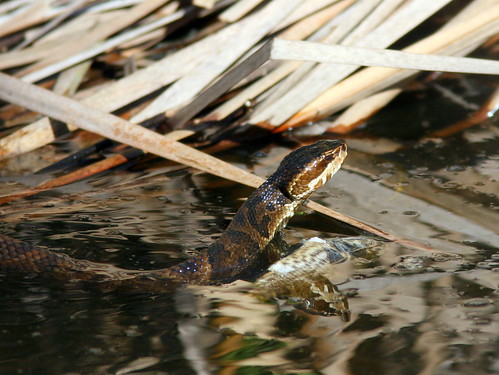
Truly, I thought I had witnessed something new to science! Cottonmouths, with their long fangs and poison glands are so well adapted for killing and eating live prey. Why would one display such an interest in the partially decomposed carcass of a fish? As I subsequently learned, the Cottonmouth’s scavenging habits are well known to science. Indeed, some populations of this species subsist almost entirely upon fish that are dropped by colonial nesting birds such as herons.
References:
South American Journal of Herpetology
The success of this species [Cottonmouth Water Moccasin] on islands is attributable, in part, to a broad trophic niche that encompasses many prey items including carrion. Numerous cottonmouths living on the island of Seahorse Key consume primarily dead fish that are dropped from colonial nesting bird rookeries, but they also prey on rats (Rattus rattus) that are invasive fauna on the island. While alternative prey items (e.g. lizards) are available to newborn snakes, smaller individuals also scavenge for fish carrion at early ages.
Pitviper Scavenging at the Intertidal Zone: An Evolutionary Scenario for Invasion of the Sea.
It is difficult for terrestrial vertebrates to invade the sea, and little is known about the transitional evolutionary processes that produce secondarily marine animals. The utilization of marine resources in the intertidal zone is likely to be an important first step for invasion. An example of this step is marine scavenging by the Florida cottonmouth snakes (Agkistrodon piscivorus conanti) that inhabit Gulf Coast islands. These snakes principally consume dead fish that are dropped from colonial nesting bird rookeries, but they also scavenge beaches for intertidal carrion, consuming dead fish and marine plants, and occasionally enter seawater.
Scavenging by Snakes: An Examination of the Literature
Although it is widely known that most species of snakes readily accept carrion in captivity, the notion of scavenging by wild snakes historically has been rejected or ignored. Herein, we review the literature describing instances of scavenging by snakes and consider the implications of carrion use on their ecology. Thirty-nine published accounts yielded 50 observations of scavenging by snakes (43 from field observations and seven from laboratory studies). Thirty-five species from five families were represented, but pitvipers and piscivorous snakes were represented more frequently than other groups.
Posted on Mon, Feb. 08, 2010
Cold took heavy toll on Florida wildlife
BY CURTIS MORGAN
cmorgan@MiamiHerald.com
Despite four decades of slogging through Everglades marshes and mangroves, wildlife ecologist Frank Mazzotti had never experienced anything like the aftermath of frigid January. The confirmed casualty count so far:
· At least 70 dead crocodiles.
· More than 60 manatee carcasses.
· A bright-side observance of multiple frozen-stiff Burmese pythons, the scourge of the Everglades.
And also, perhaps the biggest fish kill in modern Florida history.
“What we witnessed was a major ecological disturbance event equal to a fire or a hurricane,'’ said Mazzotti, a University of Florida associate professor. “A lot of things have happened that nobody has seen before in Florida.'’
The cold was simply brutal on many tropical plants and animals. Toxic iguana-sicles dropping into the mouths of unfortunate pooches was only the tip of the iceberg that descended for two weeks on South Florida.
While scientists are still surveying losses, it’s already clear that the record chill wiped out shallow corals in the Keys and devastated manatees. A preliminary assessment that Everglades National Park scientists completed last week also documented a broad and heavy toll on everything from crocodiles to cocoplums to butterflies.
Dave Hallac, the park’s chief of biological resources, summed up the impact in a word: “substantial.'’
Cold spells, like hurricanes and fires, are part of the natural cycle in South Florida, and scientists believe the system will recover — but some species will certainly rebound more slowly than others.
“I wouldn’t expect any catastrophic long-term kind of effects,'’ said Luiz Barbieri, chief of marine fisheries research for the Florida Fish and Wildlife Conservation Commission. “Most likely, this has happened occasionally over thousands of years. The system has adapted to these episodic mortality events.'’
Still, mortality numbers like this haven’t been seen in decades in the park.
A record number of endangered manatees died from cold stress, most of them — more than 60 — found in park waters stretching into the Ten Thousand Islands on the Southwest Coast. More than 70 carcasses of North American crocodile were counted, a significant hit to a species removed from the endangered list only three years ago.
About 40 species of pineland plants suffered varying degrees of frost damage. On some tree island, cocoplums looked like they were burned. Half of the population of a caterpillar that morphs into the exceedingly rare Florida leafwing butterfly died.
Then there were the literally countless dead fish — from tiny pilchards to large snook and tarpon.
The report — compiled by Hallac and colleagues Jeff Kline, Jimi Sadle, Sonny Bass, Tracy Ziegler and Skip Snow and based on aerial and water surveys and reports from a host of other observers — underplayed actual losses. It’s impossible to cover an area as vast as the park, and carcasses can sink, float into thick mangroves and easily go overlooked.
TAKING ACTION
While the park has experienced colder days, January’s chill was long and intense, punctuated with overcast skies, rain and one sub-freezing plunge. Mazzotti called it a “perfect storm'’ that left literally no warm refuges.
The chill was particularly dramatic in coastal waters. The park recorded temperatures that hovered below 68 degrees, a cold-stress limit for manatees, for 18 days; and below 60, the stress limit for snook, for 14 days.
“I’m really worried about the snook down here,'’ said Hallac. “It was amazing to see how many of the large, more mature, spawning-age fish were killed.'’
The FWC has already closed snook season until Sept. 1. After reviewing catch reports and samples taken by scientists in coming months, the agency will decide whether to extend the ban on keeping the popular fish or changing regulations to protect any others, Barbieri said.
Cold-blooded reptiles and tropical plants and fish fared the worst, but some Glades species weathered the nasty weather well. Birds, for instance, emerged largely unruffled, and some were observed scavenging fish.
Only one death of an alligator, which reside happily in Louisiana, was reported. Crocs, at the northern end of their range in South Florida, died by the dozens, including one familiar to many anglers who fish Flamingo. The 13-foot, 450-pound croc, tagged as a hatchling in 1986, frequently lurked near the Whitewater Bay boat ramp.
The cold did benefit the park’s battle to control exotic invaders. Frost slammed Old World Climbing Fern, an aggressive vine that smothers natives. Other exotics, from Asian swamp eels to the infamous Burmese python, also took hits scientists intend to further study.
THE STRUGGLE AHEAD
Scientists said recovery rates will vary among species. While snook, popular with sports anglers, has gotten the most attention from the public, the cold may have been more crippling to Goliath grouper, Barbieri said.
The fish, which can grow to massive size, nearly disappeared from Florida but had rebounded so well in recent years that wildlife managers had begun considering lifting a ban on keeping them. Goliaths died in massive numbers in the shallow Glades, considered a prime nursery. They also grow far more slowly than snook, taking six years or more to reach maturity, Barbieri said.
For some hard-hit areas and species, other outside factors can hinder recovery. Everglades marshes and coral reefs aren’t nearly as healthy as they were hundreds of years ago.
Invasive plants, such as Brazilian pepper, weren’t around to crowd out battered natives.
“If you’re totally healthy and get a cold or flu, it’s not a problem. If you’ve got diabetes and heart problems, it could be a lot more serious,'’ Hallac said. “The park is in that kind of compromised condition.'’













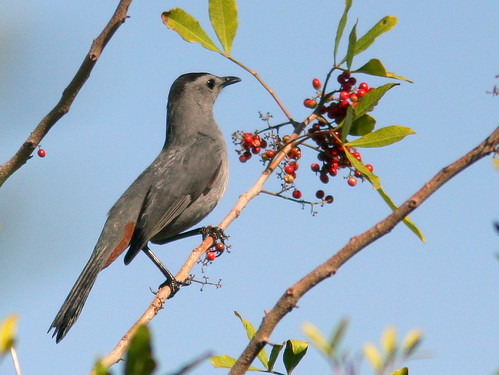

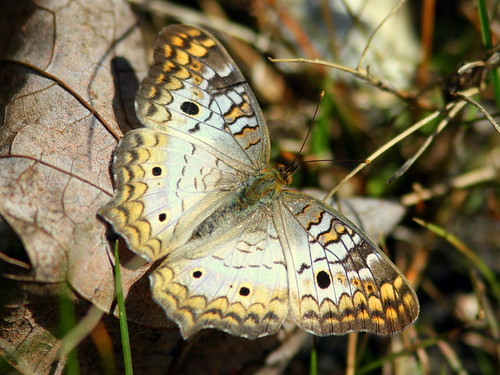

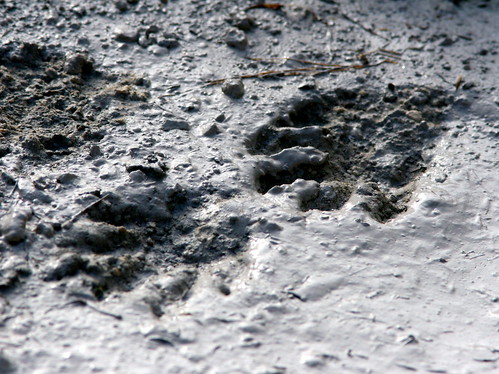

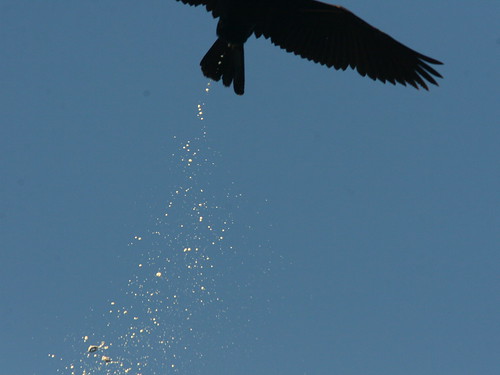
January 24th, 2010 at 8:27 am Thanks for another interesting post. I’m up in Rockledge, and we have a couple of bobcats near us: I’ll keep an eye open for their territory display.
February 7th, 2010 at 2:23 pm Wonderful photos, I love the Egret tree and the woodstorks.